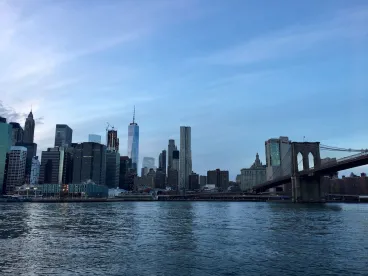On Monday New York City entered Phase 1 of re-opening. Phase 1 guidance provides specific guidelines relating to construction, manufacturing, whole trade and select retail (for curbside pickup only), agriculture, forestry and fishing. For purposes of this publication, we have focused on the State of New York’s mandatory summary guidelines for construction related activities. Many real estate developers will fall under the umbrella of “construction businesses” and we are providing an overview of the construction specific requirements established by the guidance issued by the New York State Department of Health.
In order to implement New York State’s mandatory and recommended best practices guidelines for construction, developers must prepare a written safety plan outlining the steps intended to be taken in order to prevent the spread of COVID-19 on their construction project sites. The New York Department of Health has issued a safety plan template (found here) which developers may utilize. Alternatively, developers may prepare their own safety plan. Safety plans do not need to be submitted to any governing authority for approval, however they must be retained on the project site and made available to the New York State Department of Health, the New York City Department of Buildings (“NYDOB”) or other local health or safety authorities in the event of an inspection. The written safety plans are intended to ensure that project sites have cleaning, disinfection and contact tracing plans in place so as to both prevent the spread of COVID-19 and be prepared in the event there is a positive case(s) on a project site.
Additionally, on June 5, 2020, the NYDOB issued new COVID-19 safety guidance for property owners and contractors of all permitted construction project sites across New York City which can be found here. Notably, during the first thirty (30) days of Phase 1 in New York City, the NYDOB will focus on industry education and implementation of the above mandatory guidelines and will not issue any financial penalties for violations issued during that period. However, following the initial thirty (30) day period, violations will result in financial penalties and further non-compliance may result in stop work orders and summonses with civil penalties up to $5,000 for each offense. On June 9, 2020, the NYDOB also issued FAQ(s) relating to Phase 1 and construction in New York City which can be found here.
We have focused on summarizing mandatory measures issued by the New York State Department of Health, but developers and contractors should also review the recommended best practices issued by the New York State Department of Health as well as the NYDOB safety guidance and FAQs.
Physical Distancing
-
All individuals must maintain a 6 foot distance from others at all times, unless safety or the core function of the work activity requires a shorter distance
-
In the event that individuals are less than 6 feet away from one another, individuals must wear face coverings
-
Limit workforce with respect to indoor work at the project site to no more than 1 worker per 250 square feet on site, excluding supervisors, unless additional personal protective measures are implemented
-
Confined spaces such as an elevator hoist may only be occupied at less than 50% of maximum capacity and all individuals must be wearing face coverings
-
Social distance markers must be posted in common areas of the project site
-
Establish designated areas for pick-ups and deliveries at the project site
Protective Equipment
-
Provide employees with face coverings at no cost to their employees
-
Limit the sharing of tools, machinery and materials among individuals at the project site
Hygiene and Cleaning
-
Adhere to hygiene and sanitation requirements from the CDC and DOH
-
Maintain cleaning logs on the project site
-
Provide and maintain hand hygiene stations for employees
-
Encourage employees to wash their hands frequently
-
Conduct regular cleanings on a daily basis and more than once a day for shared areas and tools
-
Prohibit shared food and beverages on the project site
Communication
-
Affirm the state-issued guidelines
-
Maintain a continuous log of every individual (including visitors) who has been present at the project site and may have close contact with others
-
Cooperate with state and local health departments and building management if an employee or visitor tests positive, including affirmatively notifying state and local health departments and participating in contact tracing efforts to identify workers, visitors, or customers who may have been in contact with the infected person (while also maintaining confidentiality pursuant to applicable regulations)
-
Develop a communications plan for employees, visitors contractors and subcontractors
-
Training employees on applicable instructions
-
Post safety plans on the project site
Screening and Testing
-
Mandate that employees who are sick stay home (or return home) if ill
-
Implement mandatory daily health screening practices, which includes (at minimum) a questionnaire of employees regarding potential COVID-19 exposure and symptoms over the past 14 days
-
Review all screening responses daily and maintain records of such review
-
Require that employees who test positive for COVID-19, are symptomatic, and/or are potentially exposed due to close contact with a confirmed or suspected case complete at least a 14-day self-quarantine before returning to the project site
-
Immediately report any positive COVID-19 cases to state and local health departments
-
Coordinate screening procedures with construction managers, contractors, subcontractors, material suppliers and design professionals
-
Ensure that health screeners are protected from potential exposure and trained pursuant to appropriate protocols from the CDC, DOH, and OSHA
-
Prohibit employees with COVID-19 related symptoms from entering the project site
-
Designate a site safety monitor who will ensure compliance with safety plans at the project site
Developers must also certify their compliance with the construction mandatory guidelines on the state’s business affirmation portal. Developers should be working to ensure that they will be able to comply with these mandates and implement new policies that will allow their project sites to remain compliant on a going forward basis and coordinate such compliance with all of the personnel that will be active on their project sites, including but not limited to construction managers, contractors, subcontractors, material suppliers and design professionals.





 />i
/>i

